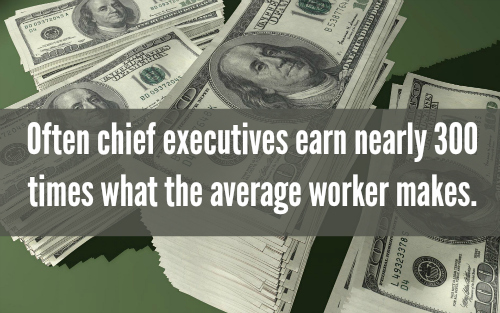You may have heard the story about Dan Price, the founder of Gravity Payments. He decided that the minimum wage for his company would be $70,000. To put it mildly, the people in his business were very excited.
He read an article on happiness that documented how, for people who earn less than about $70,000, extra money makes a big difference. And he noticed that some of his employees were struggling from paycheck to paycheck. He decided to cut his $1 million salary to $70,000 and raise the salary of everyone (from clerk to salesman) to a minimum of $70,000.
He explained that “the market rate for me as a C.E.O. compared to a regular person is ridiculous, it’s absurd.” He is well aware that the United States has one of the world’s largest pay gaps. Often chief executives earn nearly 300 times what the average worker makes.
Some companies have tried to address this pay disparity, though not with the radical actions of Dan Price. When Ben Cohen and Jerry Greenfield started Ben & Jerry’s ice cream in Vermont, they proposed a ratio of 5 to 1 between executive and worker. To their credit, they kept to that pay scale for over a decade. Then they raised it to 7 to 1. Now that Unilever USA owns the company, I am not sure what the ratio is, but I can assure you it isn’t anywhere near the original ratios.
Whole Foods tried something similar. Originally they tried to limit compensation for top executives to eight times the average worker’s pay. An article published eight years ago, estimated that by then the ratio between executives and workers rose to 19 to 1. The ratio between the president’s salary and the average worker was 96 to 1.
Dan Price may be able to justify working for $70,000 but he will find that attracting any other managers to his company might be tough when other companies will pay so much more for people with management skills. We may not like our current pay disparity, but this is what happens in a free economy.
 Listen Online
Listen Online Watch Online
Watch Online Find a Station in Your Area
Find a Station in Your Area










 Listen Now
Listen Now Watch Online
Watch Online
